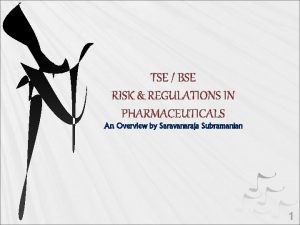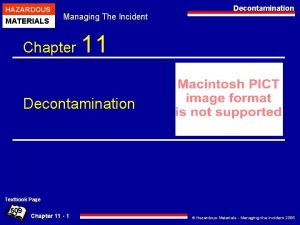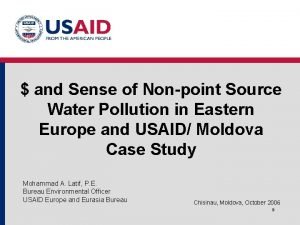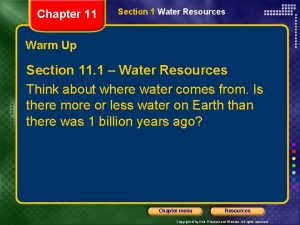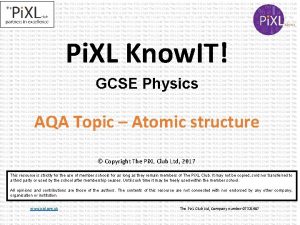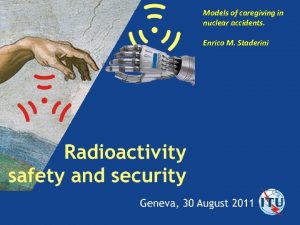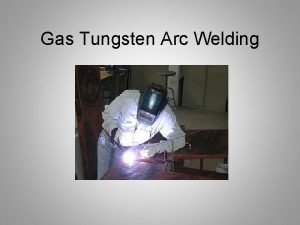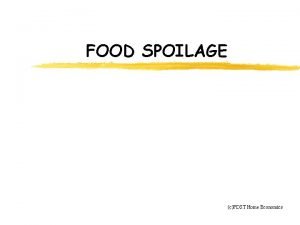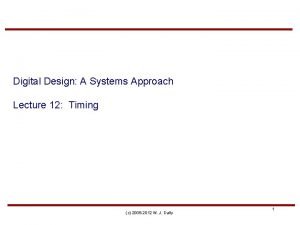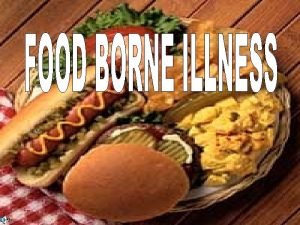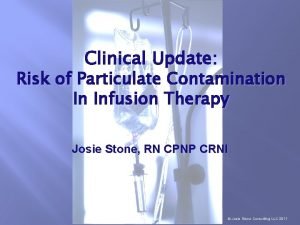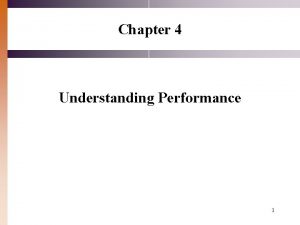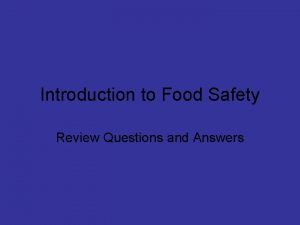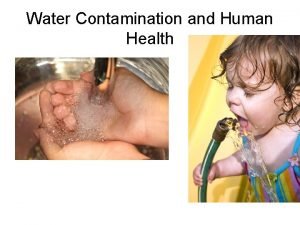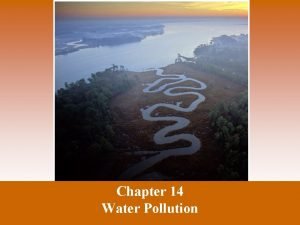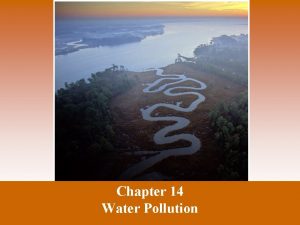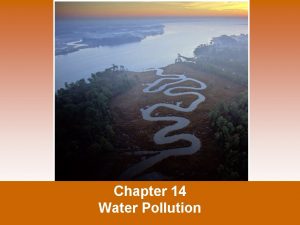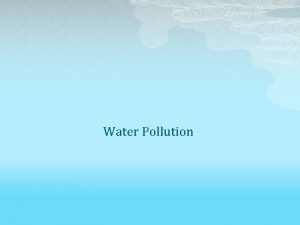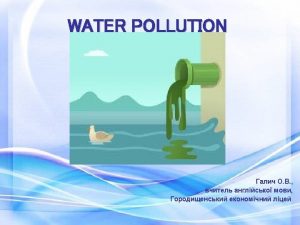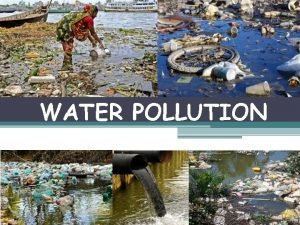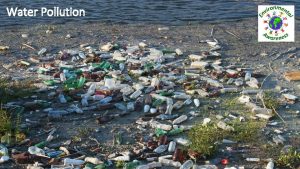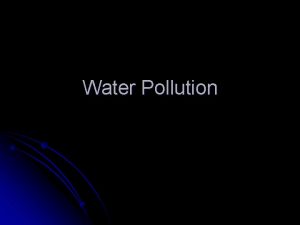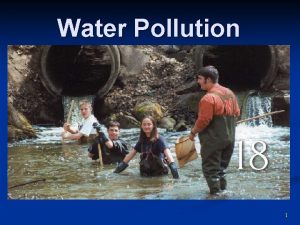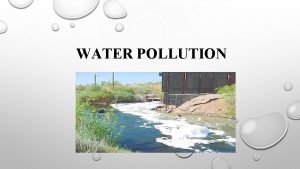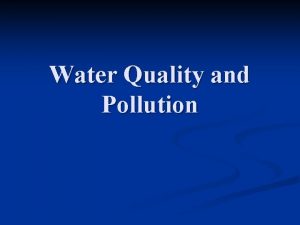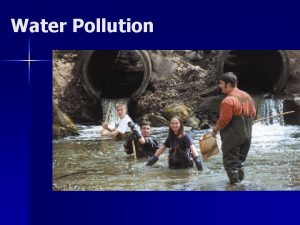WATER POLLUTION Chapter 11 WATER POLLUTION Any contamination



















- Slides: 19

WATER POLLUTION Chapter 11

WATER POLLUTION Any contamination of water that lessens its value to humans and other species, aquatic and non aquatic. Classification: By the source By the chemical

POLLUTION ROUTES • Surface water • Bodies of water that have direct contact with the atmosphere • Ground Water • Water found in the ground, either in saturation or deep deposits

POINT SOURCE • Well defined location (a point) • Sewage treatment or factory/plant waste • Discharges straight into surface or ground water

NONPOINT SOURCE • Do not come from distinct points • Comes from farmland area where pesticides and artificial fertilizer are used • Chemicals can drain/leach into ground water or into surface water

CHEMICAL TYPE CLASSIFICATIONS • Sediment • Inorganic nutrients • Thermal pollution • Disease-producing microorganisms • Toxic organic chemicals • Heavy metals • Oxygen-demanding organic wastes

SEDIMENTATION • Sand, silt, and clay eroded from soils and washed from roadways • 0. 9 billion metric tons of soil are washed into our aquatic systems in the US annually • The Mississippi River carries 210 million metric tons into the Gulf of Mexico each year

WHERE DOES SEDIMENT COME FROM • Natural stream bank erosion • Wind erosion • Farmland • Construction sites • Timber harvesting • Strip Mining


HARMFUL EFFECTS OF SOIL EROSION • Sediment will damage turbines in hydroelectric plants • Harbors and river channels must be dredged periodically • Soil can often times carry chemicals and pesticides • Suspended solids block sunlight which kill algae • Reduces oxygen • Kills bacteria

CONTOUR FARMING • Plowing, seeding, cultivating and harvesting at a right angle to the direction of the slopes • Jefferson practiced this method • Most farming years ago went up and down slopes


STRIP CROPPING • Growing crops that different types of tillage (one row crop alternated with one cover crop) • Crops are sown along contours or across the prevailing wind direction to decrease soil erosion by water & wind • Example: • Row crop (corn, potatoes, tobacco) • Cover crop (hay, soybeans)


TERRACING • Practiced by Incas and Peru and by the ancient Chinese • Limited land space due to populations • Tilled into the mountains • Allows the whole surface to be farmed • Benched terraces can allow water to stay on a surface • Rice fields


GULLY RECLAMATION • Gullies are erosion channels too large to be erased by ordinary farming operations • They are active when their walls are free of vegetation • Must be plowed and seeded at first notice

CONSERVATION TILLAGE • Plowing with different types of blades to reduce soil erosion • No till practices • Leave at least 30% of the crop residue • Farmers are encourage to practice this method

 Tse bse certificate in pharmaceutical
Tse bse certificate in pharmaceutical Contamination vs cross contamination
Contamination vs cross contamination Observations
Observations Chapter 11 section 3 water pollution answer key
Chapter 11 section 3 water pollution answer key Water and water and water water
Water and water and water water No there aren't
No there aren't Any to any connectivity
Any to any connectivity Seknder
Seknder Chapter 11 section 2 water use and management
Chapter 11 section 2 water use and management Irradiation vs contamination
Irradiation vs contamination Irradiation vs contamination
Irradiation vs contamination Septic tank contamination groundwater
Septic tank contamination groundwater Food contamination monitoring system
Food contamination monitoring system Arc welding objectives
Arc welding objectives Reason of food spoilage
Reason of food spoilage Propagation delay
Propagation delay Direct contamination meaning
Direct contamination meaning Particulate contamination in infusions
Particulate contamination in infusions Contamination and deficiency of a job performance measure
Contamination and deficiency of a job performance measure Food safety questions and answers
Food safety questions and answers
